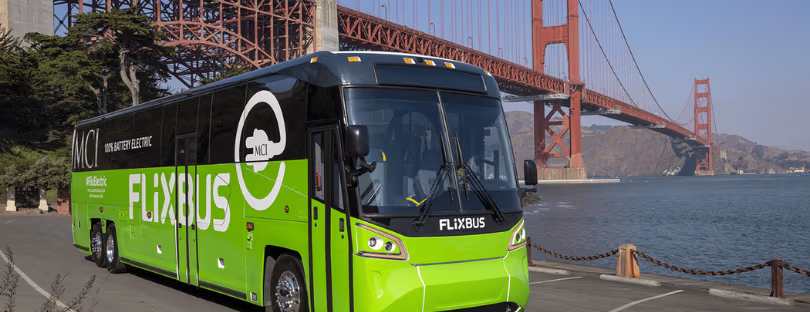
Airlines Diversifying Beyond Baggage Fees
Airlines have been raking in cash through baggage fees, but is this overreliance a double-edged sword? In a world where regulations and consumer sentiment are evolving, the need for diversification is more pressing than ever. airlines baggage fees diversification
Let’s dive deep into this topic and explore how airlines can expand their revenue streams beyond just bag fees.
The State of Baggage Fees in the Airline Industry
The CarTrawler report recently shone a spotlight on the airline industry, revealing a staggering $33.3 billion in revenue from baggage fees alone. But what does this mean for our beloved airlines? While this number spells good news, it also raises questions about sustainability and future strategies.
Regulatory Pressures on Baggage Fees
With members of the European Union advocating for the abolition of hand baggage fees and similar discussions happening in the UK, the pressure is mounting. In the US, the focus on eliminating “junk fees” adds another layer of complexity to this scenario. Can airlines continue relying on this revenue source?
The Charge Toward Diversification
Eugene Ko from Phocuswright emphasizes that the landscape of airline ancillaries is evolving. As consumer needs change, airlines have fresh opportunities to evolve from mere transportation providers to retailers. We’ll look at several areas ripe for development.
Adapting to Consumer Needs
Airlines aren’t just selling seats anymore; they’re shifting focus to enhance customer experiences. Here are some of the innovative ancillary options that are gaining traction:
- Extra legroom: More comfort for a minimal fee.
- Early boarding: Skip the lines and get settled faster.
- Premium seating options: Capitalize on businesses looking to impress.
The Future of Ancillary Revenue
Riding the Waves of Changing Preferences
However, Barry Klipp from InterLnkd believes that airlines are overdue for a shake-up. To avoid the perfect storm of plummeting yields due to inflation and other economic factors, airlines must explore solutions that break the mold. Let’s look at some fresh concepts.
Exploring Lifestyle Products
- Fashion Accessories: Airlines can promote fashion products that travelers might need.
- Beauty Services: Pre-sale beauty packages for travelers aiming to look fresh on arrival.
Personalization: The Key to Unlocking More Revenue
Sergio Mendoza from Airnguru suggests airlines take it a step further by customizing their offerings. Here’s how they can do it:
- Unbundle traditional fare packages: Move expenses from the ticket to tailored add-ons.
- Implement generative AI: This allows airlines to dynamically tailor services based on real-time demand.
Broader Perspectives on Ancillary Opportunities – Beyond the Flight Experience
Jason Guan of DidaTravel shared valuable insights, urging airlines to focus on post-booking add-ons. Imagine booking your flight and seamlessly tacking on:
- Local experiences: Culture and activities unique to your destination.
- Exclusive event access: Think concerts or sports events, right at your fingertips!
Capturing On-Board Experiences
Manuel Núñez from Servantrip highlights the potential of utilizing the inflight environment. Picture this: on long-haul flights, passengers can book local experiences before touching down.
The Benefits of Pre-Booking Adventures
- Save time: Travelers won’t scramble for bookings.
- Avoid disappointment: Secure spots at popular sites that might sell out.
Sustainability as an Ancillary Focus Area
As travelers become increasingly environmentally conscious, airlines can tap into this sentiment. Christian Sabbagh from Travelsoft discusses the merits of offering sustainability-focused ancillaries, such as: airlines baggage fees diversification
- Personalized carbon offsetting: Passengers can directly contribute to projects that offset travel emissions.
- Eco-conscious travel packages: Enhance brand loyalty by aligning with travelers’ values.
The Interconnection of Air Travel and Hospitality
Imagine if your luggage could arrive at your hotel before you do? Adam Harris from Cloudbeds suggests integrating technology to make this a reality. This could create a seamless travel experience, offering:
- Baggage delivery services: This adds comfort and enhances convenience.
- Partnerships with local hotels: Boosts revenue through collaborations.
The Role of Technology in Driving Ancillary Revenue
Maxim Sevastianov from Trava paints a picture of the reality many airlines face: outdated technology limits their capability to adapt. Investing in upgraded systems becomes essential. Here’s why:
- Flexibility: Airlines need nimble systems to respond to trends.
- Data-driven solutions: Precise targeting keeps offers relevant to customers.
Ancillary Revenue Trends:
- Premium Service Demand: Airlines have seen increased demand for premium services like extra legroom and airport lounge access, reflecting changing consumer behavior post-pandemic.
- Dynamic Pricing: Airlines are increasingly adopting dynamic pricing models, allowing for real-time adjustments to ancillary service fees, similar to ticket prices.
The report emphasizes the ongoing importance of ancillary revenue for airline profitability, especially as passenger traffic continues to recover globally. It also points out that while low-cost carriers heavily rely on ancillary income, traditional carriers are increasingly adopting these strategies as well.
Conclusion: Embracing Change for a Brighter Future
As we navigate through this complex landscape, it’s clear that leaning heavily on baggage fees may leave airlines vulnerable. By diversifying their revenue streams and adopting innovative technologies, airlines can create a more sustainable future. It’s time to rethink strategies and turn challenges into opportunities, capturing both the necessities and the desires of tomorrow’s travelers. airlines baggage fees diversification









